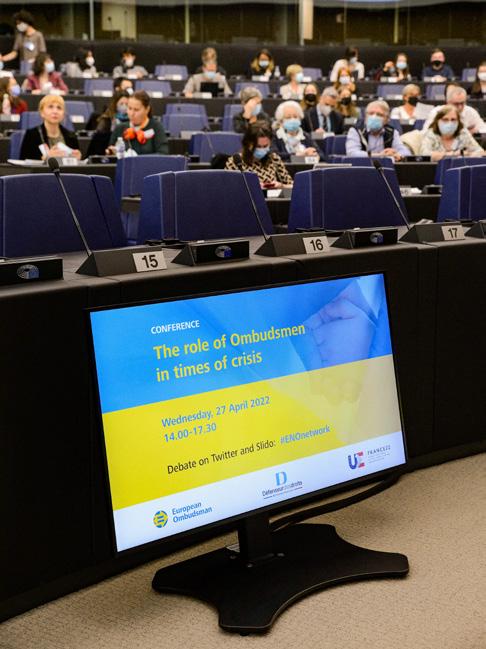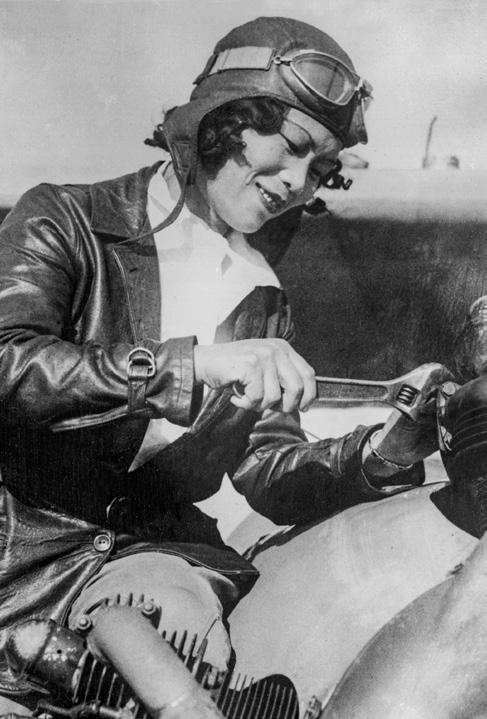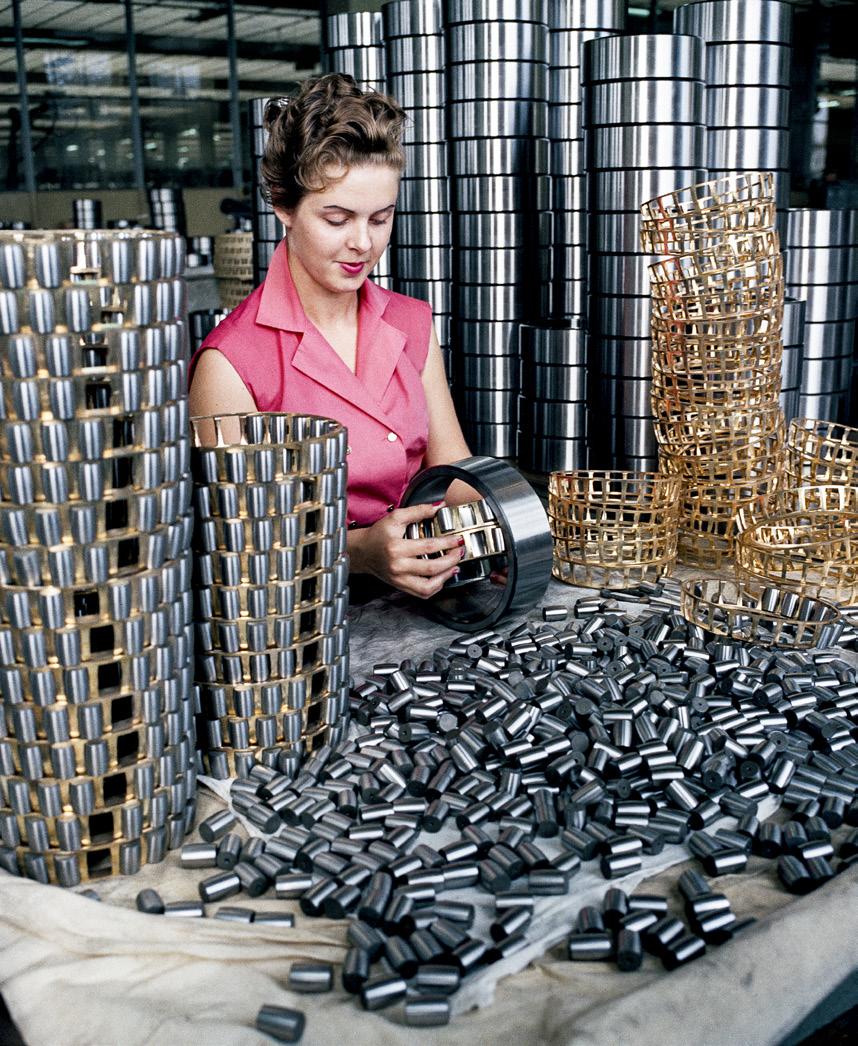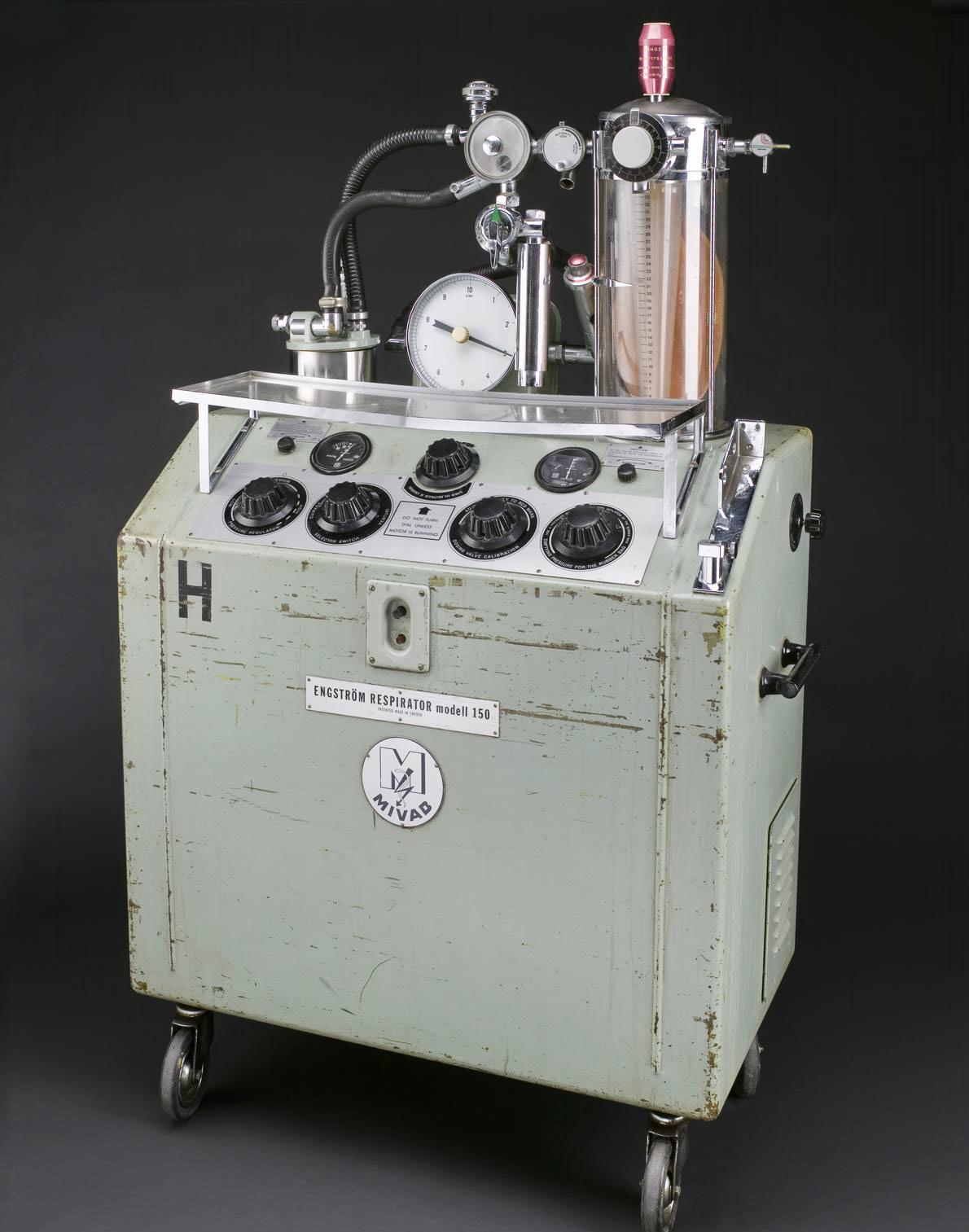Contents
PREFACE BY HM THE KING OF SWEDEN 7
INTRODUCTION – DOING SOMETHING NO ONE HAS EVER DONE BEFORE 9
FROM ZERO TO A HUNDRED – THE CELSIUS TEMPERATURE SCALE 16
THE QUEEN OF ALCOHOL – MAKING POTATOES INTO AQUAVIT 20
WARMTH THAT LASTS – SWEDISH TILED STOVE 24
THE PEOPLE’S ADVOCATE – OMBUDSMAN 26
STRIKING A LIGHT – SAFETY MATCHES 28
MAKING IT ALL GO ROUND – THE PROPELLER 32
A MIND SHARP AS STEEL – GÖRANSSON AND THE BESSEMER PROCESS 36
AN EXPLOSIVE INNOVATION – ALFRED NOBEL AND DYNAMITE 40
THE CREAM OF THE CROP – DE LAVAL AND THE CENTRIFUGAL SEPARATOR 44
A GRIPPING STORY – ADJUSTABLE SPANNER 48
POWER ON A LARGE SCALE – THREE-PHASE ELECTRIC POWER 50
TO THE LIGHTHOUSE – THE SUN VALVE 54
SMOOTH OPERATING – BALL BEARINGS 58
THE MEASURE OF MAN – GAUGE BLOCKS AND THE STANDARD INCH 64
MIND THE GAP – ZIP FASTENER 68
KEEPING COOL – THE REFRIGERATOR 72
LIGHTWEIGHT YET STRONG – AERATED CONCRETE 76
WORTH PRESERVING – NINNI KRONBERG AND POWDERED MILK 80
AN EFFECTIVE COMBINATION – SALAZOPYRIN (SULFASALAZINE) 82
EASING THE PAIN – LIDOCAINE (XYLOCAINE) 84
EXPLOSIVE SAFETY – EJECTION SEAT 88
STACKED MILK – RAUSING, WALLENBERG AND TETRA PAK 90
IDENTIFY YOURSELF – NATIONAL IDENTIFICATION NUMBER 94
SUCKING IT UP – WETTEX ABSORBING CLOTH 96
SAVING LIVES EVERY DAY – VENTILATOR 98
TO VIEW THE UNSEEN – ECHOCARDIOGRAPHY AND ULTRASOUND 102
SELF-ASSEMBLY – IKEA AND FLATPACKS 106
BUCKLE UP – THE SEAT BELT 110
THE HEART OF THE MATTER – THE PACEMAKER 114
ENERGY AS BRAIN SURGERY – THE GAMMA KNIFE 120
MORE DAZZLING SMILES – DENTAL IMPLANTS 124
CLOSE TO YOUR HEART – BABY CARRIER 128
GOVERNED EQUALITY – PARENTAL LEAVE FOR BOTH PARENTS 132
CONNECTING TO THE FUTURE – AXE TELEPHONE EXCHANGE 134
MOVING FORWARD – THE ROLLATOR 138
AT THE TOUCH OF A BUTTON – MOBILE PHONE ‘CALL’ BUTTON 140
ONE STEP AHEAD – MOBILE BROADBAND 142
EASY TO STOMACH – OMEPRAZOLE (LOSEC) 146
IN THE AIR AND AT SEA – THE STDMA NAVIGATION SYSTEM 150
KEEP ROCKING – AN IMPORTANT BLOOD SAMPLE TOOL 154
USE YOUR HEAD – INCREASING HELMET SAFETY WITH MIPS 156
CLOSE CONNECTIVITY – BLUETOOTH 158
CALLING FOR FREE – SKYPE 160
THE MAP OF LIFE – THE HUMAN PROTEIN ATLAS 162
A TOTALLY NEW DELIVERANCE – SPOTIFY 164
SEEING THE INVISIBLE – THE VISUALIZATION TABLE 168
CLEAN WATER FROM THE SUN – SOLVATTEN 172
THE SPACE SHOWER – ORBITAL SYSTEM 174
A PROTECTIVE COLLAR – HÖVDING HEAD PROTECTION 176
INVESTMENTS FOR GOOD – GREEN BONDS 180
INSTEAD OF PLASTIC – PAPIRA 182
AFTERWORD – INNOVATION AND COLLABORATION 187
INDEX 193
IMAGE CREDITS 197
The people’s advocate
The Swedish term ombudsman has been adopted in many places around the world to denote an official tasked with scrutinising the actions of public authorities on behalf of citizens. The word ombudsman comes from the Old Norse umboðsmaðr. It has been documented in Danish, Swedish, Norwegian and Icelandic sources since the Middle Ages as a general term for a person who represents another. Sweden’s first official ombudsman – the ‘Supreme Ombudsman’ – was appointed in 1713 by King Charles XII to monitor the running of the country during his exile in Turkey.
That was not the first time in history a ruler appointed some sort of representative to scrutinise his officials, though. In China in the third century bce, the Qin emperor dispatched a ‘secret inspector’ to check on the provincial management and people’s opinions of the authorities. In the Roman Empire, tribunes served similar functions.
But it was Sweden that created the first ombudsman in the modern sense: an official who represents and safeguards citizens’ rights and interests vis-à-vis executive authority. That was in 1809, when Sweden adopted a new constitution based on the French philosopher Montesquieu’s division of power into three functions: legislative, judicial and executive. The position of Parliamentary Ombudsman, appointed by the Swedish parliament, was created as a counterpart to the Chancellor of Justice, who represented the government.
A new constitution had become necessary as a result of King Gustav IV Adolf’s method of ruling. He had, in an unfortunate way, drawn Sweden into the Napoleonic Wars and had lost the territory of Finland – the eastern half of the Swedish Empire – to Russia. In the spring of 1809, a group of leading noblemen rebelled and deposed the king. The Swedish parliament drew up a new constitution, inspired by 18th-century Enlightenment ideals, to prevent a recurrence of the authoritarianism practised by Gustav IV Adolf’s father, King Gustav III. One check on the monarch’s power was the newly created position of Parliamentary Ombudsman, who would safeguard subjects’ rights on behalf of parliament.
Anyone in Sweden can submit a complaint to the ombudsman if they think a public authority has acted unlawfully or arbitrarily or
committed an abuse of power. Today, Sweden has five such offices in addition to the original Parliamentary Ombudsman. They deal with areas including disability discrimination and children’s rights. Over 80 countries around the world have introduced ombudsmen after this model. In fact, the Swedish word ombudsman is used in a number of English-speaking countries, including Australia (the Commonwealth Ombudsman), Pakistan (Federal Ombudsman) and Ireland (the Office of the Ombudsman). The word is also used in Dutch, for de federale ombudsman. Other countries have created their own names for the same function, such as France (le Mediáteur de la République), Peru (Defensoría del Pueblo), Poland (Rzecznik Praw Obywatelskich) and Romania (Avocatul Poporului), to name just a few. Most of these ombudsmen – or ombudspersons, as they are often called nowadays – were established in the last half-century. The first country after Sweden to establish an ombudsman was Finland in 1919. That brought things full circle, since it was the loss of Finland that led to the creation of the office of Sweden’s first ombudsman.
Ombudsmen play a key role in monitoring the actions of government and public authorities.

A gripping story
ADJUSTABLE SPANNER
One day in the late 1880s, Johan Petter Johansson could not find a single pipe wrench in his engineering workshop in Enköping. His employees were all working on remote jobs and had taken the workshop’s entire set of fixed pipe wrenches along with them. That quandary would eventually lead to one of the world’s most practical inventions: the adjustable spanner (wrench).
Johansson solved the problem of his missing pipe wrenches by fabricating a wrench with jaws that could be adjusted to fit the dimensions of a pipe. In 1888 he obtained a patent on his invention, called the plumber’s wrench. It quickly became a commercial success. He then turned his attention to fixed spanners for nuts and bolts.
For centuries, blacksmiths had forged long-handled tools for gripping and turning various types of threaded metal parts. One early use was for assembling knights’ suits of armour, but perhaps their most important purpose was to tighten wagon wheels to prevent them from coming loose. Initially, nuts and spanners were made individually, but production started to become fairly standardised in the 19th century. People could purchase sets of spanners in common sizes.
Inventors also started experimenting with various types of adjustable spanners. In 1842, an English engineer named Richard Clyburn created a version with two moveable jaws that could be adjusted by means of a screw. It is unclear whether Johansson knew about Clyburn’s invention. In any case, Johansson obtained a Swedish patent
One of the very first adjustable spanners made by J.P. Johansson, patented in 1892.

his original design by making one of the jaws fixed and one moveable by means of a screw device. In 1892 he obtained a patent on this adjustable spanner, which is essentially the same model still in use all over the world. In Denmark, it is commonly called a svensknøgle (meaning ‘Swedish key’), while the Russian and Hebrew nicknames for the tool translate as ‘little Swede’.
Today Bahco, the company founded by Johan Petter Johansson, has sold more than 100 million adjustable spanners. Johansson handed the business over to his sons in 1916 so he could devote more time to his inventions. He obtained more than 110 patents, but the adjustable spanner was his most significant innovation.
Johansson also has fans who celebrate him for his sugar tongs. They came about after his wife complained when he came in straight from the workshop and used his dirty fingers to pick up a sugar lump from the bowl for his coffee. Even if the sugar tongs did not have the same impact as the adjustable plumber’s wrench and the adjustable spanner, it is yet another example of a Swedish inventor’s ability to draw inspiration from the practical problems of everyday life rather than dream of revolutionary creations.
Aviation pioneer Katherine Sai-Fun
Choung uses an adjustable spanner to tighten a nut in Los Angeles in 1933.

Smooth operating
If the city of Gothenburg hadn’t been built on a thick layer of clay soil, the Swedish engineer Sven Wingquist wouldn’t have invented the self-aligning ball bearing. Then again, maybe he would have – it’s difficult to tell how much inspiration an inventor draws from within, and how much comes from their external circumstances.
In the early 20th century, Wingquist was a young maintenance engineer at the Gamlestadens Fabriker textile mill. He faced a problem: the mill’s large looms, which were operated by steam engines via long drive shafts that went right up into the roof. The drive shaft bearings kept breaking down, and replacements had to be ordered from abroad. Wingquist determined that the breakdowns were caused by barely perceptible settling of the ground, which slightly shifted the drive shaft beyond the tolerance of the bearings. The result was that the machinery would jam, increasing the risk of fire.
The principle of roller bearings had been known since ancient times, when the Egyptians transported massive stones over cylindrical logs to build the pyramids. The Romans refined the technology by using wooden spheres for tasks like rotating statue plinths –which apparently was a fairly common activity in the Roman Empire. Leonardo da Vinci – yes, him again – was the first person to set out the theoretical principle of ball bearings in his famous notebooks. But ball bearings did not come into widespread use until the 19th century, first in horse-drawn carriages and bicycles, followed by industrial machinery with moving parts.
Wingquist had trained as a textile engineer and spent some time working in the United States. He kept abreast of new international developments. Around the turn of the 20th century, a debate raged about what sort of friction bearing was superior: slide bearings, in which all the parts of a moving machine slid against each other with a layer of oil or grease to lubricate them; or ball bearings, in which metal spheres rolled around in a track, called a raceway.
In 1902 Richard Stribeck, a German professor of metallurgy, presented evidence that a ball bearing was more efficient. That led Wingquist to consider possible improvements that could protect ball bearings from wear and tear when they were subjected to pressure
Ball bearings help reduce friction and improve reliability –thereby saving energy. SKF has manufactured ball bearings of all sizes since 1907.
Following pages: Bearings more than 2 metres across are installed in a cable drum for NOV, a Norwegian offshore energy company.


on their raceway, such as when the ground settled. Wingquist set up an experimental workshop near the textile mill. In 1906 he took out a patent on a spherical ball bearing. The raceway in which the ball assembly moved was rounded, which made it less sensitive to lateral pressure. However, this ball bearing performed less well under axial loads – that is, movement in the same direction as the rolling of the ball assembly.
The mill’s executives, who had been sceptical of Wingquist’s ambitions at first, realised that their young engineer was on to something. They contributed start-up capital for a subsidiary to develop his ideas. The new company was called Svenska Kullagerfabriken (‘Swedish Ball-Bearing Factory’), or SKF for short.
In the spring of 1907, Wingquist submitted a patent application for a multi-row, self-adjusting radial ball bearing. Its distinguishing feature was its two rows of balls, with a raceway in the outer ring that enabled the bearing to withstand axial pressure. The invention was widely known as a ‘self-aligning ball bearing’ and it made SKF into one of Sweden’s most successful companies. Wingquist, always thinking ahead, had also patented his invention in other major industrial countries. With subsidiaries in Germany, the UK and the United States, SKF became a global leader.
Today, we are surrounded by ball bearings. They are inside our washing machines, vacuum cleaners, fans, computers and many other devices in our homes. An average household will contain between 100 and 200 ball bearings. Some of them are tiny. The smallest ball bearing is around half a millimetre across. But there are also huge slewing bearings, such as the one with a diameter of 13 metres that is part of a Canadian oil-drilling rig. Ball bearings are also used to protect buildings against earthquakes. For example, the San Francisco airport stands on a large number of piles, each of which rests on a ball bearing measuring 1.5 metres in diameter.
Assembling roller bearings in 1959. Roller bearings are a variation on ball bearings. Both types of bearings need to support heavy loads, so they are manufactured from vacuumtreated steel free from cracks and impurities.
Saving lives every day
Imagine being unable to breathe … During the coronavirus pandemic that fear was realised for unprecedented numbers of people. Ventilators – another Swedish innovation – played a crucial role in saving lives.
People suffered breathing difficulties during previous epidemics as well. When a polio epidemic broke out in the late 1940s, the main treatment available was the iron lung. It resembled a large tin can that enclosed the patient’s entire body, with just their head sticking out through a rubber collar. The iron lung worked by alternating high and low pressure around the patient’s body, helping them to inhale and exhale. Even so, many patients died.
When Carl Gunnar Engström qualified as a doctor in 1941, he took up a post to treat infectious diseases at Stockholm’s isolation hospital. If he had contented himself with that role, the modern ventilator would never have come about. Fortunately, Engström took on an extra job with the Swedish Air Force, examining test pilots who flew near the sound barrier.
Supersonic flight was in its infancy in the late 1940s. Saab, the Swedish engineering and manufacturing company, had started developing a fighter plane that could reach such speeds. A Saab 32 Lansen exceeded the sound barrier for the first time in 1953.
Engström was interested in the effects of such extreme forces on the levels of various gases in pilots’ blood, so he conducted a series of tests.
Engström quickly noticed a similarity between his patients and the supersonic pilots. Too much carbon dioxide remained in the patients’ blood. Because it was not possible to check how much air patients were getting inside the iron lung, doctors could not monitor their oxygen and carbon dioxide levels. Engström developed an air pump that could regulate the air in a patient’s lungs by means of an airtight tube in their trachea. In July 1950, his first prototype was ready. The first volume-controlled artificial ventilator went into production the following year. In addition to helping many polio patients, the device was of great benefit in operating theatres.
In 1963, Carl Gunnar Engström received his PhD on the basis of his invention. Further improvements were made as the device spread round the world.
The original Engström ventilator was large and bulky, but it represented a revolution in healthcare by pumping air into patients’ lungs. It was widely used in a polio epidemic in the 1950s.

The crucial breakthrough is credited to a Swedish medical student, Björn Jonson, who in turn got the idea for a flow regulator from his lecturer Sven Ingelstedt in 1964. Ingelstedt kept a collection of unsolved problems in a folder labelled ‘Only God and I know’. Ingelstedt’s self-confidence was as great as his generosity towards others. He had dismissed earlier attempts to create a functional flow regulator, saying, ‘You cannot regulate the flow’. But when Björn Jonson, who had also identified the issue of regulating the timing and rate at which air was delivered to patients, asked, ‘If I figure out how to regulate it, can we build a ventilator?’ Ingelstedt was quick to reply, ‘Absolutely!’
That was the first step along the path to the modern ventilators we have today. The problem was that Jonson had no access to a laboratory and no knowledge of how to build medical equipment. But he knew where he could get help. Soon he made friends with skilled technicians at the hospital in Lund. They helped him to grind, polish and drill glass and metal components. When Jonson nearly caused a disaster in the hospital’s workshop, he was banned from the facility. Then Håkan Westling, professor of clinical physiology, purchased a lathe and a milling machine, which they set up in a broom cupboard, under the hospital management’s radar. Jonson used the equipment to assemble some functioning flow regulators. Working with Sven Gunnar Olsson, an engineer, he also constructed a new type of ventilator. It was silent and weighed just 4 kilograms (8.8 lb), a fraction of Engström’s bulky model. Crucially, it was far more versatile. It allowed patients some control over their breathing. Björn Jonson applied for a patent on his ventilator. The following day, he headed to Elema-Schönander, a medical technology company that would later be acquired by Siemens.
The company invested significant resources in the device and gave Jonson and Olsson, working with anaesthetist Lars Nordström, the freedom to continue refining their ideas. Their new ventilator featured electronic flow and pressure gauges, and they soon added a carbon dioxide gauge. As a physiologist, Jonson knew that the diagnostics was as important as providing air flow to the patient. When their ServoVentilator was launched 1971, it quickly became a global leader. Updated versions are still manufactured by Getinge today.
The modern ServoVentilator functions as both breathing support and diagnostic instrument. When it was launched in 1971, it formed the basis of intensive care, an entirely new concept at the time.

At the touch of a button
MOBILE PHONE ‘ CALL’ BUTTON
Not many people are familiar with Laila Ohlgren. But billions of people use her innovation every day when they press the green button on their mobile phone to make a call.
For most people – particularly younger folks – it’s natural to dial a phone number first and then press the ‘call’ button. But that’s not how things worked with old-fashioned landline phones. In those days, you had to pick up the receiver (shaped like the symbol on the green button) to get a line and then use the buttons or rotary dial to input a sequence of digits to call another telephone.
Those steps were also used on the first mobile telephones on the market in the 1980s. But early mobile networks had patchy coverage and often suffered outages, especially if you were on the move. There was a high risk of losing a connection or losing numbers when dialling.
This is where Laila Ohlgren, the first female engineer at the Swedish state telephone authority, comes in. She joined the authority in 1956 at the age of 19 and obtained an engineering degree later on. In the late 1970s she was working on NMT, the Nordic mobile telephony project. It was one of the world’s first wireless telephone networks.
Shortly before the launch of NMT in 1981, she hit upon a solution to the dialling problem with mobile phones. Instead of transmitting the digits one by one, you could incorporate a button that would send the entire telephone number that had been dialled all at once. That eliminated the danger that the signal for any digit would be lost in a mobile black spot.
In 2009, Laila Ohlgren was awarded the Polhem Prize, Sweden’s most prestigious award for engineering. She died in 2014 at the age of 76. By that time, her green button had been a standard feature on mobile phones all over the world for 30 years.
The green button is one of the simplest and yet most significant innovations for mobile phones.

Clean water from the sun
SOLVATTEN
Two billion people – nearly 30 per cent of the Earth’s population – lack access to clean water at home. Solvatten, which means ‘solar water’ in Swedish, is the brand name for a clever black container. People pour dirty water into it, and clean water comes out. As the name indicates, the container uses solar energy to purify the water, destroying microbiological contamination, such as parasites and bacteria
The traditional way to purify water is by boiling. It has traditionally been considered women’s work. Often, children are expected to help with the time-consuming task of gathering firewood and kindling. Wood fires release carbon dioxide into the atmosphere and generate soot and smoke in homes, which are harmful to health. Burning wood also leads to deforestation, loss of biodiversity and soil erosion, because tree roots are needed to keep the soil stable. Research has shown that up to 70 per cent of all energy consumed in sub-Saharan Africa is used for boiling water.
In the late 1990s, Petra Wadström, a designer and artist and former research assistant, was living in Australia with her family. She also travelled around Indonesia and visited several developing countries in Africa. She was distressed to see how many people in those areas lacked access to clean water and suffered health problems as a result, but she was also determined to do something about the problem. The contrast between the overabundance of sunlight and the lack of clean water at those latitudes stuck in her mind.
Wadström was convinced the solution had to be small-scale and accessible for people in their daily lives. In order to work, it had to be extremely durable, with no expensive filters or other parts that needed to be replaced. And even more crucially, it had to be easy to use. She had seen too many examples of projects where people from wealthy countries told impoverished families how they should live their lives. Petra Wadström realised that if her idea was going to work, its design and marketing would need to show an understanding of and respect for the circumstances in which people would use it in their day-to-day lives.
Petra Wadström produced some prototypes and sure enough, UV rays and warmth from the sun destroyed microorganisms’ DNA,
Solvatten systems use the sun’s rays to purify and heat water, destroying harmful microorganisms. It saves time, especially for women and children. For Priscilla Lokisiau, a teacher from western Kenya, a Solvatten container also serves as a conversation starter for her pupils to discuss science and social issues.
preventing them from multiplying. The sun both purified and heated the water. She gave an early version to families in Nepal, Thailand, Indonesia and South Africa to try it out. The users provided valuable feedback, which led to further improvements. In 2011, production of Solvatten containers started in earnest, and so did cooperation with the companies and organisations that finance Solvatten as part of their sustainability work. Keeping this collaboration going is as important a key to success as the production itself. Today, Solvatten is used by more than 500,000 people in over 40 countries.

One of those countries is Uganda, which has poorly developed infrastructure and has taken in more than 1.4 million refugees fleeing conflict in other nearby countries. The situation has led to catastrophic environmental and living conditions, while energy, water and food shortages cause further tension and conflicts between local communities and refugee families. Diseases such as typhus, cholera and dysentery, all of which cause severe diarrhoea, spread easily and lead to malnutrition, particularly among children. Since 2020, PLAN International and UNHCR have been working to roll out Solvatten units in these areas to deal with water issues and increase the use of solar energy outside Uganda’s electricity grid.
Petra Wadström has received numerous awards and commendations for her invention, which saves lives every day. She is also proud of the fact that it frees up time for women. That’s time they can use to help their children with their schoolwork, improve their own skills or just to rest. Wadström says she has not just invented a device to purify water; she has also created freedom – more freedom for women.
